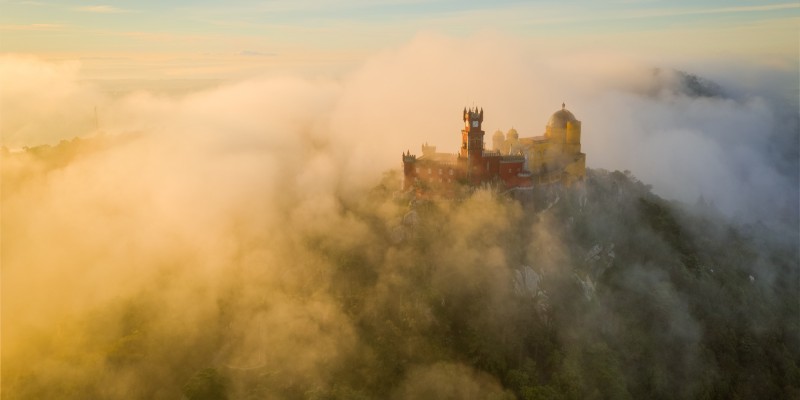Sintra Views by Brad Berglund
Photos from his visit to Sintra. Can you identify where they were taken?
Sintra, Portugal, is both a place and a state of mind: open to the unexpected, delighting in the fantastic, and eager to explore the unknown. It is a unique blend of striking natural landscape, ancient stone monuments, elaborate gardens, magical forests, and stunning castles and palaces. Sintra has drawn people to it for more than 7,000 years.
Sintra is:
From the best-known sites—The National Palace, Quinta da Regaleira, The Castle of the Moors, and The Palace of Pena—to lesser-known but equally powerful places like The Sanctuary of Our Lady of Peninha, The Chapel of Saint Eufémia, and The Monk´s Tomb and Fairy Forest, Sintra offers the visitor numerous opportunities to explore memorable places and experience magic.

Photos from his visit to Sintra. Can you identify where they were taken?
Our first visit to Biester Palace
Alto da Vigia is the site of a monumental Roman sanctuary from the 2nd–3rd centuries CE.
The Archaeology Museum of San Miguel de Odrinhas (MASMO) explores the history of the region for over 2,000 years, beginning with the 1st century BCE.
Legends abound of mysterious tunnels honeycombing Sintra Mountain.
Originally discovered in 1878, the Tholos do Monge is an approximately 4,500-year-old megalithic structure.
Penedo is considered one of the most traditional villages—if not the most traditional—in Sintra.
On the hillside above São Pedro de Penaferrim is a chapel dedicated to Santa Eufémia
São Mamede de Janas has been sacred for a long time. Local legend asserts that there was a temple dedicated to Diana at the site.
Located the middle of Sintra-Cascais Natural Park, Peninha is the most western of the peaks on the Monte da Lua.
This wild and rugged promontory is the westernmost edge of the ancient eruptive Serra da Sintra.
The Capuchos Convent, also known as the Cork Convent or the Convent of the Holy Cross of the Sintra Hills, was built in 1560.
The massive stone walls of the Moorish Castle snake over the even more massive granite boulders that litter the sides of Sintra Mountain.
Monserrate Palace is a palatial villa, an eclectic and charming construction, designed with rotundas and towers, arabesque cut-outs and Moorish-influenced plaster work.
The oldest national palace in Portugal
Buried beneath the romantic exotica of Pena Palace lies a very different story-
The Regaleira Estate includes a palace and chapel, grottoes, tunnels, towers, a ziggurat, elaborate fountains, and an initiatic well.

provide detailed information and suggestions for turning casual tourism into transformational travel. There is no better location to include in this series than the UNESCO World Heritage Cultural Landscape Site of Sintra, Portugal and its magical Mountain of the Moon.